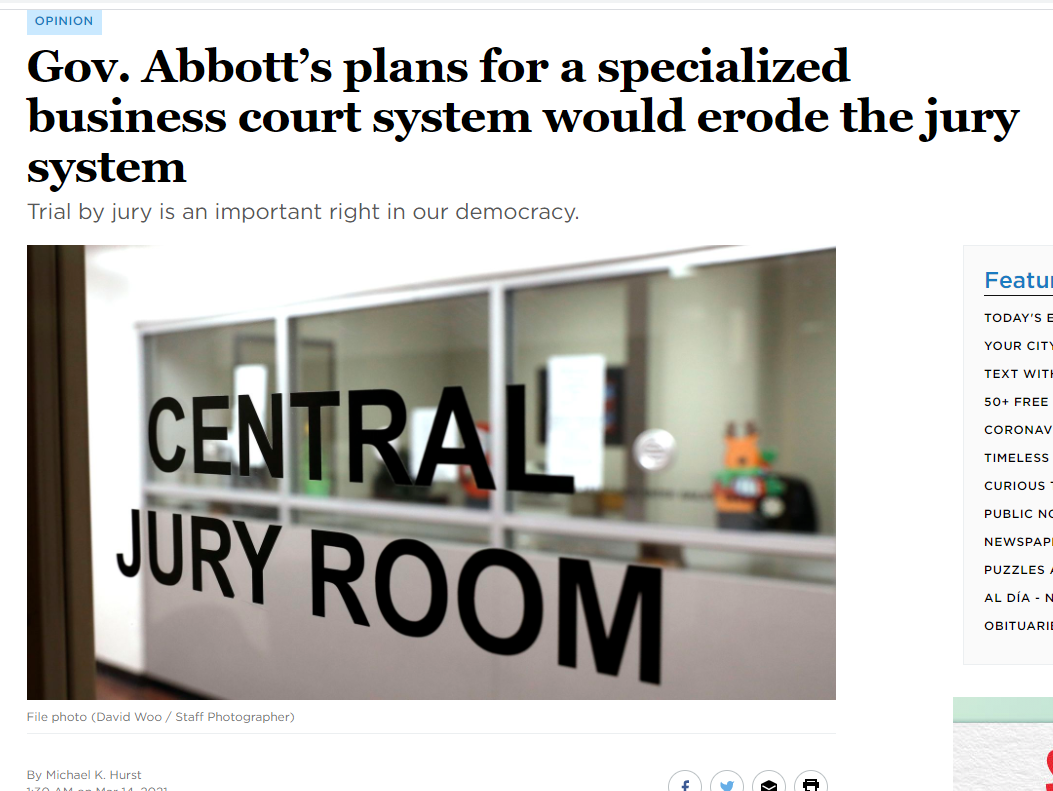The empire of  Genghis Khan stretched across thousands of miles, conquering all that it encountered. While at times, the doctrine of ERISA preemption seems to have a similar track record, it encountered a limit in Atkins v. CB&I, LLC, a dispute about whether a severance plan came within ERISA’s scope. The Fifth Circuit observed that the plan lacked “the ongoing administrative scheme characteristic of an ERISA plan,” specifically noting that it “calls only for a single payment,” the “simplicity of calculating the one-time payment,” that no discretionary decisions were called for as to the specific plaintiffs in this case, and that the situation did not present “any special administrative apparatus dedicated to overseeing the Plan.” No. 20-30004 (March 22, 2021).
Genghis Khan stretched across thousands of miles, conquering all that it encountered. While at times, the doctrine of ERISA preemption seems to have a similar track record, it encountered a limit in Atkins v. CB&I, LLC, a dispute about whether a severance plan came within ERISA’s scope. The Fifth Circuit observed that the plan lacked “the ongoing administrative scheme characteristic of an ERISA plan,” specifically noting that it “calls only for a single payment,” the “simplicity of calculating the one-time payment,” that no discretionary decisions were called for as to the specific plaintiffs in this case, and that the situation did not present “any special administrative apparatus dedicated to overseeing the Plan.” No. 20-30004 (March 22, 2021).
Monthly Archives: March 2021
Douglas v. Wells Fargo Bank notes two different approaches that the Fifth Circuit has taken to an aspect of summary-judgment practice: “We have previously addressed the issue of new claims raised for the first time in response to a motion for summary judgment. We have taken two different approaches. The first approach states that a ‘claim which is not raised in the complaint but, rather, is raised only in response to a motion for summary judgment is not properly before the court.’ The second approach
instructs the district court to treat a new claim raised in response to a motion for summary judgment as a request for leave to amend. The district court must then determine whether leave should be granted.” No. 18-11567 (March 26, 2021) (footnotes omitted).
 The question whether “manifest disregard of the law” allows a court to vacate an arbitration award lingered in the case law since Hall Street Assocs. v. Mattel, Inc., 552 U.S. 576 (2008), which held that an arbitration agreement cannot create a ground for vacatur or modification beyond those set out in the FAA.
The question whether “manifest disregard of the law” allows a court to vacate an arbitration award lingered in the case law since Hall Street Assocs. v. Mattel, Inc., 552 U.S. 576 (2008), which held that an arbitration agreement cannot create a ground for vacatur or modification beyond those set out in the FAA.
Jones v. Michaels Stores provided “an opportunity to resolve at least one thing that we have directly resolved [about Hall Street]: ‘manifest disregard of the law as an independent, nonstatutory ground for setting aside an award must be abandoned and rejected.” No. 20-30428 (March 15, 2021) (quoting Citigroup Global Markets, Inc. v. Bacon, 562 F.3d 349, 358 (5th Cir. 2009)).
But what of McKool Smith, P.C. v. Curtis Int’l, Ltd., 650 F. App’x 208 (5th Cir. 2016) (per curiam)? Jones clarified that McKool Smith was a case “in which a party argued that an arbitrator’s manifest disregard of the law showed that he had ‘exceeded [his] powers within the meaning of 9 U.S.C. § 10(a)(4).” In that case, “[b]eecause of uncertainty about whether the manifest-disregard standard could still be used as a means of establishing one of the statutory factors, McKool Smith assumed arguendo that it could because the standard was not met in any event.” In this case, however, “[a]s Jones does not invoke any statutory ground for vacatur, Citigroup Global was dispositive of Jones’s challenge to the arbitration award.
The DC Circuit’s recent style manual amendment that criticized the use of “Garamond” font has drawn national attention. As this matter has now become a pressing issue facing the federal courts, 600Camp weighs in with these thoughts, all of which are written in 14-point size: 
Accordingly, if you really like Garamond and are writing a brief with a word limit rather than a page limit, you should consider bumping the size up to 15-point. And of course, in a jurisdiction with page limits rather than word limits, Garamond offers a way to add more substance to your submission–but be careful that this extra substance does not come at the price of less visibility.
Recent orders set these matters for en banc reconsideration:
US v. Dubin, in which the panel held: “An issue of first impression for our court is whether David Dubin’s fraudulently billing Medicaid for services not rendered constitutes an illegal ‘use’ of ‘a means of identification of another person’, in violation of 18 U.S.C. § 1028A.”
 Daves v. Dallas County, an Ex Parte Young case in which the panel held: “With one exception, we agree with the district court that the Plaintiffs have standing. This suit was properly allowed to proceed against most of the judges and the County. As for the Criminal District Court Judges, though, we hold that they are not proper defendants because the Plaintiffs lack standing as to them and cannot overcome sovereign immunity. We also disagree with the district court and hold that the Sheriff can be enjoined to prevent that official’s enforcement of measures violative of federal law.”
Daves v. Dallas County, an Ex Parte Young case in which the panel held: “With one exception, we agree with the district court that the Plaintiffs have standing. This suit was properly allowed to proceed against most of the judges and the County. As for the Criminal District Court Judges, though, we hold that they are not proper defendants because the Plaintiffs lack standing as to them and cannot overcome sovereign immunity. We also disagree with the district court and hold that the Sheriff can be enjoined to prevent that official’s enforcement of measures violative of federal law.”
Hewitt v. Helix Energy Solutions Group, a 2-1 decision involving “a legal question common to all executive, administrative, and professional employees—and to the modestly and highly compensated alike: whether a worker is paid ‘on a salary basis’ under” the Fair Labor Standards Act.
The Fifth Circuit granted a motion for sanctions as to a motion to supplement the record in Texas Alliance for Retired Americans v. Hugh); the key fact involved the duty of candor to the tribunal: “Appellees did not notify the court that their latest motion to supplement the record filed on February 10, 2021 was nearly identical to the motion to supplement the record filed several months ago by the same attorneys, on September 29, 2020. Critically, Appellees likewise failed to notify the court that their previous and nearly identical motion was denied. This inexplicable failure to disclose the earlier denial of their motion violated their duty of candor to the court.” No. No. 20-40643 (March 11, 2021).
 While written in a criminal appeal, Judge Oldham’s recent concurrence about specificity in error preservation is of broad general interest; he concludes:
While written in a criminal appeal, Judge Oldham’s recent concurrence about specificity in error preservation is of broad general interest; he concludes:
“[A] general declaration of ‘insufficient evidence!’ is not a meaningful objection. It challenges no particular legal error. It identifies no particular factual deficiency. It does nothing to focus the district judge’s mind on anything. It’s the litigator’s equivalent of freeing the beagles in a field that might contain truffles. Cf. del Carpio Frescas, 932 F.3d at 331 (“Judges are not like pigs, hunting for truffles buried in the record.” (quotation omitted)). Rather, if the defendant wants to preserve an insufficient-evidence challenge for de novo review, he must make a proper motion under Federal Rule of Criminal Procedure 29 and ‘specify at trial the particular basis on which acquittal is sought so that the Government and district court are provided notice.'”
United States v. Kieffer, No. 19-30225-CR (March 19, 2021). Notes: (1) A big 600Camp thanks to Jeff Levinger for drawing my attention to this case, and (2) Judge Oldham correctly notes that beagles are superior to pigs for finding truffles, as pigs tend to eat the valuable truffles after locating them.
 28 USC § 1631 says: “Whenever a civil action is filed in a court as defined in section 610 of this title . . . and that court finds that there is a want of jurisdiction, the court shall, if it is in the interest of justice, transfer such action or appeal to any other such court . . . in which the action or appeal could have been brought at the time it was filed . . ., and the action or appeal shall proceed as if it had been filed in . . . the court to which it is transferred on the date upon which it was actually filed in . . . the court from which it is transferred.” In Franco v. Mabe Trucking Co., the Fifth Circuit concluded that “want of jurisdiction” included both personal and subject-matter jurisdiction, observing: “[I]t appears no circuit split currently exists on this issue, and while we cannot predict how those circuits who have left the question open will ultimately resolve the matter, we decline to now create a split by adopting an overly restrictive reading of § 1631. Because no amount of legislative history can defeat unambiguous statutory text, we join the weight of circuit authority and conclude that the use of the term ‘jurisdiction’ in § 1631 encompasses both subject-matter and personal jurisdiction.” No. 19-30316 (March 18, 2021) (footnote and citation omitted). The Court also found no Erie problem in section 1631’s definition of the relevant filing date for limitations purposes.
28 USC § 1631 says: “Whenever a civil action is filed in a court as defined in section 610 of this title . . . and that court finds that there is a want of jurisdiction, the court shall, if it is in the interest of justice, transfer such action or appeal to any other such court . . . in which the action or appeal could have been brought at the time it was filed . . ., and the action or appeal shall proceed as if it had been filed in . . . the court to which it is transferred on the date upon which it was actually filed in . . . the court from which it is transferred.” In Franco v. Mabe Trucking Co., the Fifth Circuit concluded that “want of jurisdiction” included both personal and subject-matter jurisdiction, observing: “[I]t appears no circuit split currently exists on this issue, and while we cannot predict how those circuits who have left the question open will ultimately resolve the matter, we decline to now create a split by adopting an overly restrictive reading of § 1631. Because no amount of legislative history can defeat unambiguous statutory text, we join the weight of circuit authority and conclude that the use of the term ‘jurisdiction’ in § 1631 encompasses both subject-matter and personal jurisdiction.” No. 19-30316 (March 18, 2021) (footnote and citation omitted). The Court also found no Erie problem in section 1631’s definition of the relevant filing date for limitations purposes.
 My colleague Michael Hurst wrote an insightful op-ed in the Dallas Morning News about a proposed system of specialized business courts for Texas. He questions whether it fits well with constitutional guaranties of the right to jury trial.
My colleague Michael Hurst wrote an insightful op-ed in the Dallas Morning News about a proposed system of specialized business courts for Texas. He questions whether it fits well with constitutional guaranties of the right to jury trial.
 Another voice joined the chorus of appellate observations about perceived excesses involving sealed records in Le v. Exeter Fin. Corp.: “[E]ntrenched litigation practices harden over time, including overbroad sealing practices that shield judicial records from public view for unconvincing (or unarticulated) reasons. Such stipulated sealings are not uncommon. But they are often unjustified. With great respect, we urge litigants and our judicial colleagues to zealously guard the public’s right of access to judicial records their judicial records—so ‘that justice may not be done in a corner.'” No. 20-10377 (March 3, 2021).
Another voice joined the chorus of appellate observations about perceived excesses involving sealed records in Le v. Exeter Fin. Corp.: “[E]ntrenched litigation practices harden over time, including overbroad sealing practices that shield judicial records from public view for unconvincing (or unarticulated) reasons. Such stipulated sealings are not uncommon. But they are often unjustified. With great respect, we urge litigants and our judicial colleagues to zealously guard the public’s right of access to judicial records their judicial records—so ‘that justice may not be done in a corner.'” No. 20-10377 (March 3, 2021).
Equity takes many forms; in Louisiana landlord-tenant law, it manifests as the doctrine of “judicial control.” In Richards Clearview LLC v. Bed Bath & Beyond, the Fifth Circuit observed: “[E]ven assuming arguendo that BB&B defaulted on the lease, the ‘unusual circumstances’ of this case—pandemic-related office closures causing delays in the receipt of notice coupled with prompt efforts to rectify the asserted underpayments— warranted the district court’s exercise of judicial control.” No. 20-30614 (March 8, 2021) (unpublished).
The Fifth Circuit concluded that a magistrate judge lacked jurisdiction to enter final judgment. The parties had conducted an entire wrongful-foreclosure case before a magistrate judge–but, early in the case, on the standard form, PNC expressly declined to allow trial by a magistrate judge. The Court concluded that consent could not be implied in the face of this express refusal. PNC Bank v. Ruiz, No. 20-50255 (March 2, 2021).
 During Hurricane Harvey, “to prevent the Lake Conroe Dam from overflowing and failing, the San Jacinto River Authority released from the dam 79,141 cubic feet of water per second—nearly the flow rate of Niagara Falls.” The resulting surge of water destroyed 22 boat slips owned by a condo association, which sought to recover from its insurer. The Fifth Circuit affirmed judgment for the condo association, noting:
During Hurricane Harvey, “to prevent the Lake Conroe Dam from overflowing and failing, the San Jacinto River Authority released from the dam 79,141 cubic feet of water per second—nearly the flow rate of Niagara Falls.” The resulting surge of water destroyed 22 boat slips owned by a condo association, which sought to recover from its insurer. The Fifth Circuit affirmed judgment for the condo association, noting:
- legally, while the policy’s Flood Endorsement says: “We will not pay for loss or damage caused by ‘flood’, arising from . . . [a h]urricane or tropical storm,” it defined a “flood” as “a general and temporary condition of partial or
complete inundation of 2 or more acres of normally dry land areas or of 2 or
more distinct parcels of land (at least one of which is your property) with
water”–and thus does not reach the boat slips, which were on water; - factually, the association offered evidence that the water release “created a suction effect, like a sink drain that is unplugged, but on a much greater scale. Because of the rate at which water was being released, the water on the north side of [the] lake (where the Boat Slips are located) was below normal levels afterwards, despite the rainfall brought by Harvey.”
Playa Vista Conroe v. Ins. Co. of the West, No. 20-20307 (March 5, 2021).
 A class of plaintiffs settled with several insurance companies, resolving various disputes about a large sinkhole caused by years of salt mining by Texas Brine Co. Texas Brine objected to the settlement and the Fifth Circuit found that it lacked standing to do so. While “[n]on-settling
A class of plaintiffs settled with several insurance companies, resolving various disputes about a large sinkhole caused by years of salt mining by Texas Brine Co. Texas Brine objected to the settlement and the Fifth Circuit found that it lacked standing to do so. While “[n]on-settling  parties generally lack standing to object to a settlement agreement,” “[a] potential exception exists ‘if the settlement agreement purports tot strip non-settling defendants of rights to contribution or indemnity.” Here, Texas Brine did not not have any right to indemnification or contribution from these insurers for the remaining claims, so it lacked standing to object to the settlement. LeBlanc v. Texas Brine Co., LLC, No. 20-30208 (March 1, 2021).
parties generally lack standing to object to a settlement agreement,” “[a] potential exception exists ‘if the settlement agreement purports tot strip non-settling defendants of rights to contribution or indemnity.” Here, Texas Brine did not not have any right to indemnification or contribution from these insurers for the remaining claims, so it lacked standing to object to the settlement. LeBlanc v. Texas Brine Co., LLC, No. 20-30208 (March 1, 2021).
WickFire won a tortious-interference judgment against TriMax. It claimed that TriMax “committed ‘click fraud’ by repeatedly clicking on WickFire’s advertisements without any intention of making purchases,” which has the effect of driving up WickFire’s costs without any corresponding increase in revenues. The Fifth Circuit reversed, noting:
- Tortious interference with contract. “WickFire produced evidence that a third party had a deleterious financial effect on its bottom line. But as was the case in El Paso Healthcare System, the record here fails to indicate that WickFire’s damages occurred because a co-contracting party breached its agreement with WickFire.”
- Tortious interference with prospective business relations. “WickFire’s damages theory for this claim was grounded in the assertions that TriMax’s tortious conduct delayed the development of TheCoupon.co website by six months and that WickFire lost $334,000 in profits because of that delay. When WickFire’s damages expert was asked how he calculated that dollar figure, the expert said that he had ‘quantified those damages by calculating the amount of profits that [WickFire] lost because of the six-month delay.’ He did not testify as to how he performed that calculation, nor did he point to any data concerning the business generated by TheCoupon.co. This evidence is threadbare and conclusory.”
Wickfire LLC v. Woodruff, No. 17-50340 (Feb. 26, 2021).
The plaintiff in Fontana v. H O V G L L C alleged that a debt collector violated the Fair Debt Collection Act by speaking with his sister. His claim failed because the FDCA requires a “communication,” and in this case: “[T]he conversation between HOVG’s representative and Fontana’s sister did not convey any information regarding a debt, either directly or indirectly. HOVG’s representative did not mention Fontana’s debt at all and did not directly provide any information about it. Instead, HOVG’s representative mentioned ‘an important personal business matter.’ That does not even suggest the existence of a debt, much less provide information about it. The closest HOVG’s representative came to giving information about a debt was providing the name of the debt collector.” No. 20-30471 (Feb. 26, 2021).